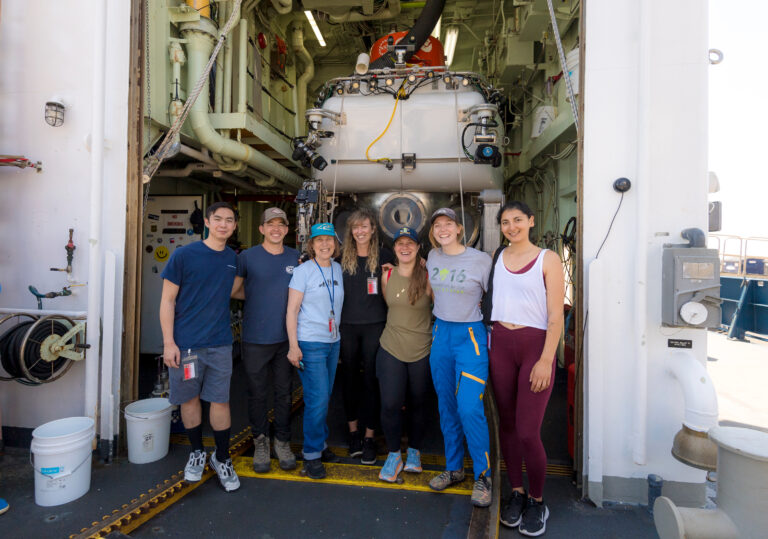A quartet of leading female deep-sea researchers led by UC San Diego Scripps Institution of Oceanography Professor Emerita Lisa Levin is exploring the poorly understood deep-sea ecosystems surrounding methane seeps off the coast of Southern California using the Alvin human-occupied submersible.
The 14-day National Science Foundation (NSF)-funded voyage aboard the Woods Hole Oceanographic Institution’s (WHOI) R/V Atlantis departed on July 16 to study where the methane emerging from these seeps goes and how far its biological sphere of influence extends.
Levin has completed more than 50 dives aboard the three-person Alvin. Operated by WHOI and owned by the US Navy, the sub has been in operation since 1964 and has made immeasurable contributions to the study of the deep ocean over more than 5,100 dives, including safely delivering the first human explorers to the sunken remains of the Titanic.
The NSF-funded Alvin will allow Levin and her colleagues to study up close the sunless ecosystems that surround the parts of the seafloor that leak methane. Unlike deep-sea hydrothermal vents, methane seeps are not hot, but these two unusual habitats share a common feature found in few ecosystems on Earth – they are fueled by chemical energy rather than sunlight. At methane seeps, some organisms have evolved the ability to consume the gas.
In some places, methane escapes from rocks or sediment on the seafloor in the form of bubbles. Levin explained that these seeps are quite common and mostly occur along continental margins, between 300m and 1,200m deep. The microbes that can survive by processing methane create the base of a food web cut off from the sun that includes clams, worms, sponges, crabs, octopuses and fish.
“Most of the methane released by these deep-water seeps doesn’t reach the surface because it is consumed by microbes and animals,” said Levin. “We need that because it helps keep methane out of the atmosphere where it would fuel climate change. If we damage these animals and microbes, we could be destroying a really important natural process that helps regulate the climate.”
Levin and the rest of the scientists on the expedition hope to discover how far the methane emerging from these seeps spreads underwater and which animals can make use of it.
“We think that methane can be used by a broader range of organisms than is currently understood to do this,” said Levin. “The methane from these seeps may have a larger biological footprint than we realized.”
If Levin and her colleagues can show that more microbes and animals are utilizing methane farther from the seeps, it could have important implications for conservation since some of these seeps are being considered for protection from exploitation. Studying microbes that consume methane could also provide novel insights relevant to fighting climate change.
“These seeps host an amazing array of microbial processes that we are still discovering and are relatively untapped when it comes to industrial applications and climate change applications such as methane or carbon capture,” said Levin. “We should be looking to these ecosystems to help us solve some of our problems on land.”
Each dive will collect animal specimens, water samples, sediment and rock samples, and observations for analysis back on board the ship.
“We are trying to redefine the biological footprint of a methane seep,” said Levin. “The visual we get of patches of animals like clams or tube worms may cover half a square kilometer, but if we can show that the methane itself is spreading out farther and fueling more animals than we realized, then we can expand the recognized footprint of a methane seep and that could have significant conservation implications.”
For more oceans news, please click here.



